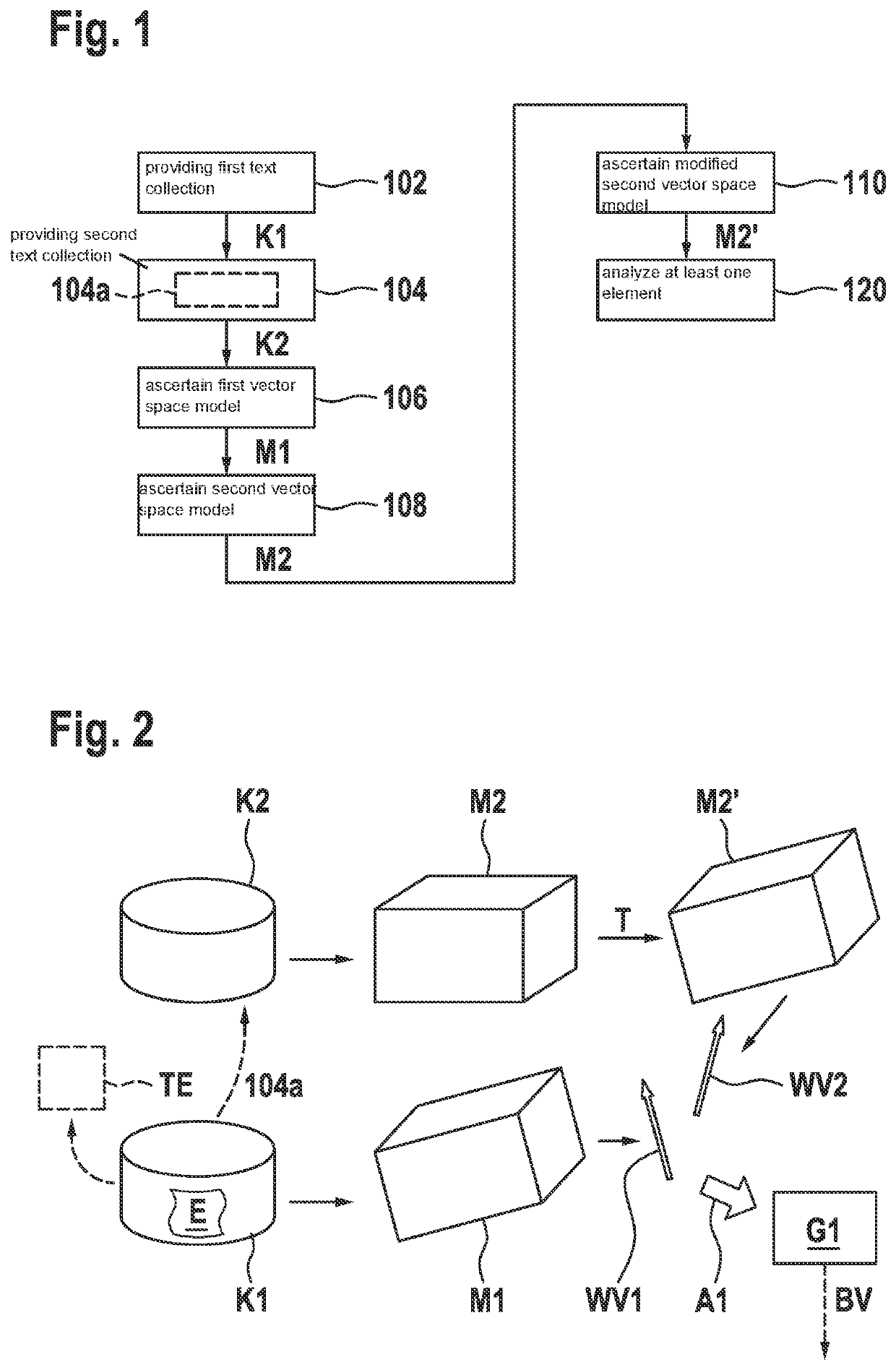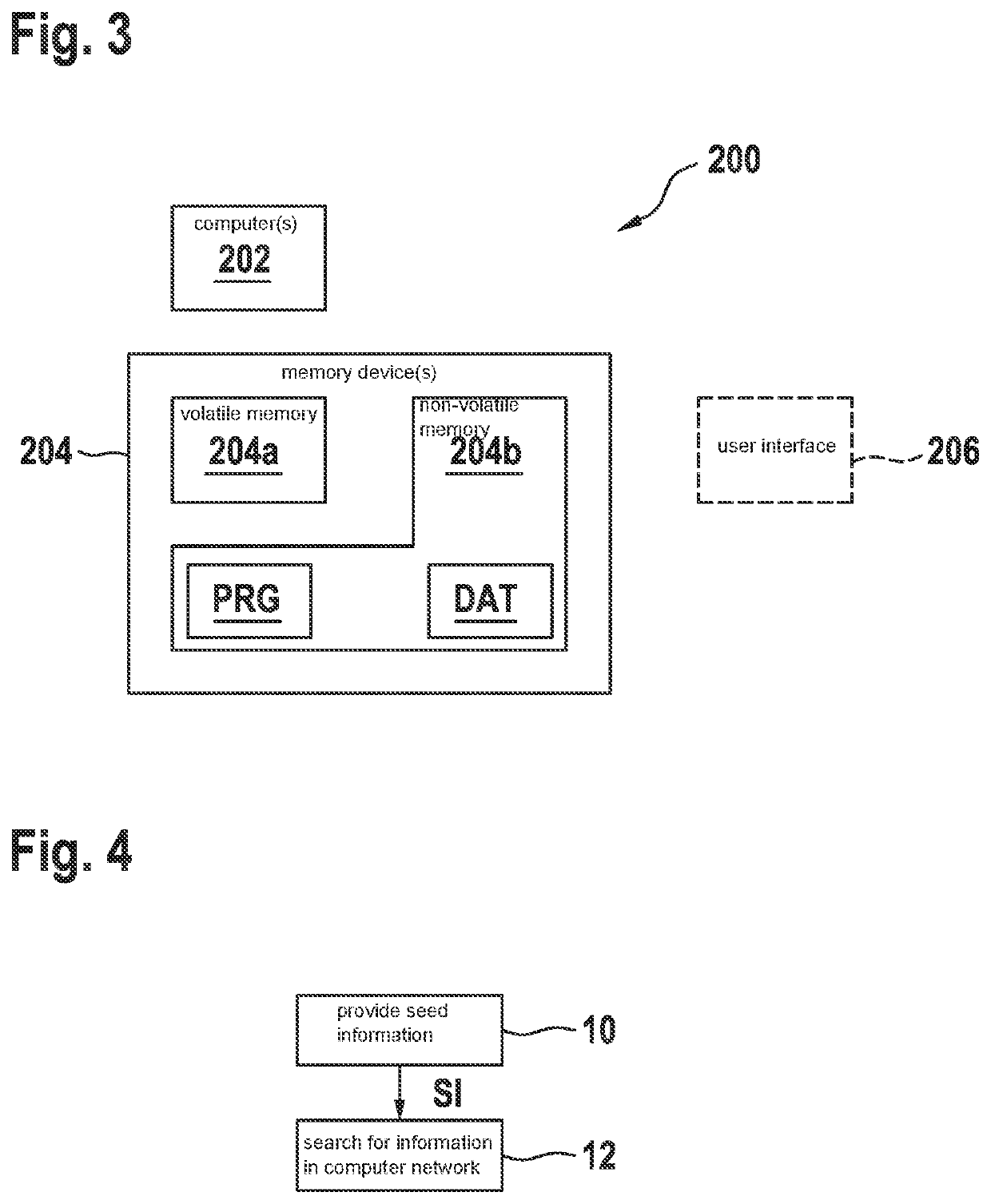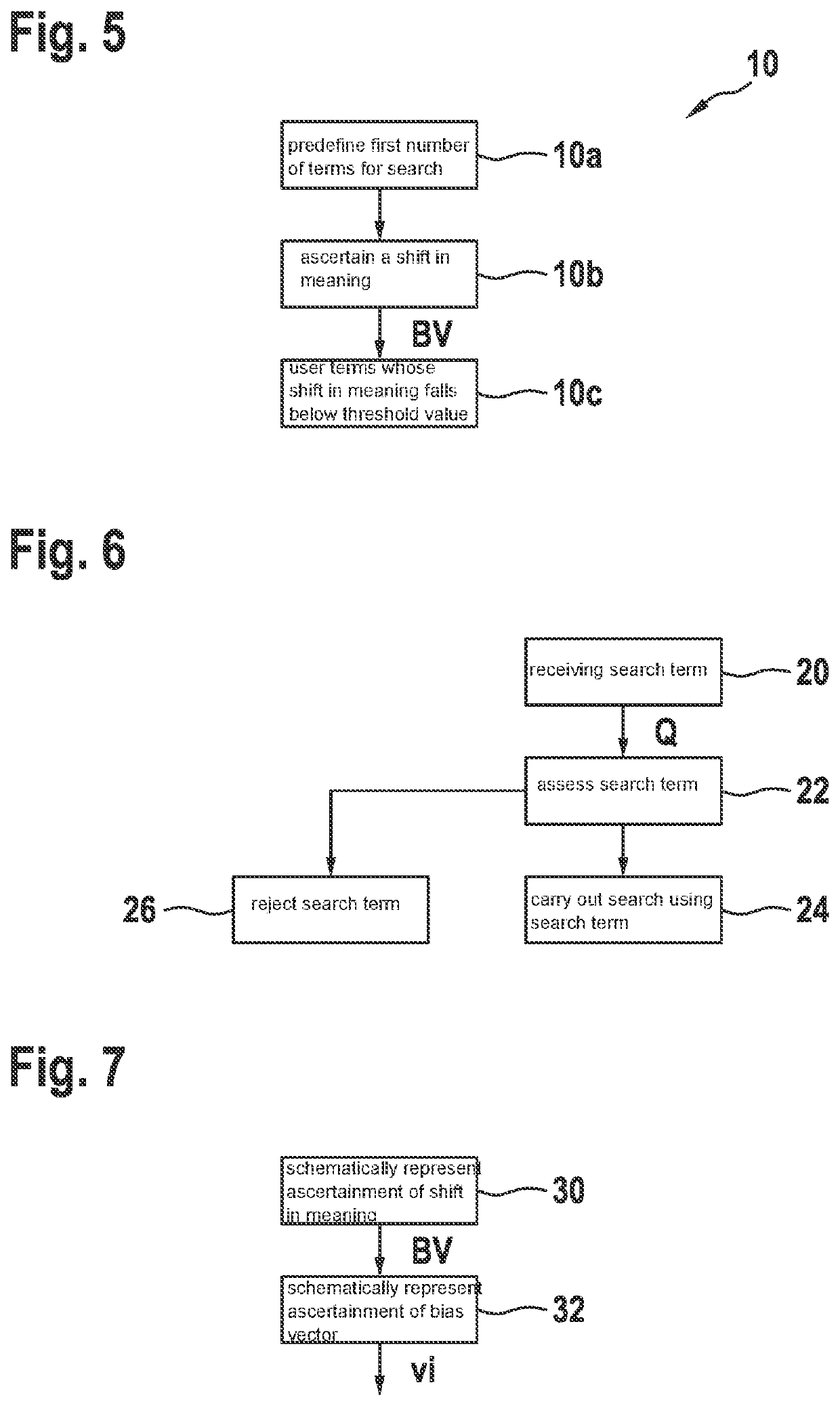Method and device for analyzing elements of a text collection, method and device for searching for information in digital data
a text collection and element analysis technology, applied in the field of methods for analyzing elements of a first text collection, can solve problems such as the classification of ambiguous terms and so-called sub-technical terms
- Summary
- Abstract
- Description
- Claims
- Application Information
AI Technical Summary
Benefits of technology
Problems solved by technology
Method used
Image
Examples
Embodiment Construction
[0040]FIG. 1 schematically shows a simplified flowchart of a method according to preferred specific embodiments. The method is usable for analyzing elements E of a first text collection (“corpus”) K1 (cf. also the block diagram from FIG. 2), and includes the following steps: providing 102 (FIG. 1) first text collection K1 (FIG. 2), providing 104 (FIG. 1) a second text collection K2 that is different from first text collection K1, ascertaining 106 a first vector space model M1 that characterizes a first vector space associated with first text collection K1, ascertaining 108 a second vector space model M2 that characterizes a second vector space associated with second text collection K2, ascertaining 110 a modified second vector space model M2′ as a function of a mapping of the second vector space onto the first vector space, for example with the aid of a transformation matrix T, analyzing 120 at least one element E of first text collection K1 as a function of a first word vector WV1 ...
PUM
 Login to View More
Login to View More Abstract
Description
Claims
Application Information
 Login to View More
Login to View More - R&D
- Intellectual Property
- Life Sciences
- Materials
- Tech Scout
- Unparalleled Data Quality
- Higher Quality Content
- 60% Fewer Hallucinations
Browse by: Latest US Patents, China's latest patents, Technical Efficacy Thesaurus, Application Domain, Technology Topic, Popular Technical Reports.
© 2025 PatSnap. All rights reserved.Legal|Privacy policy|Modern Slavery Act Transparency Statement|Sitemap|About US| Contact US: help@patsnap.com



